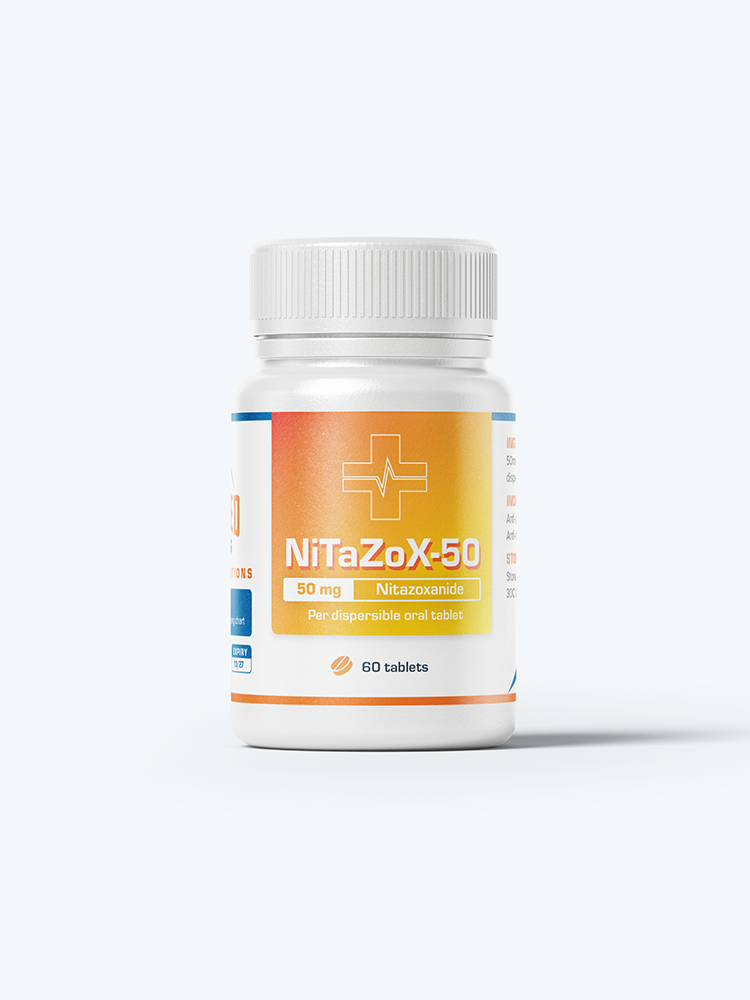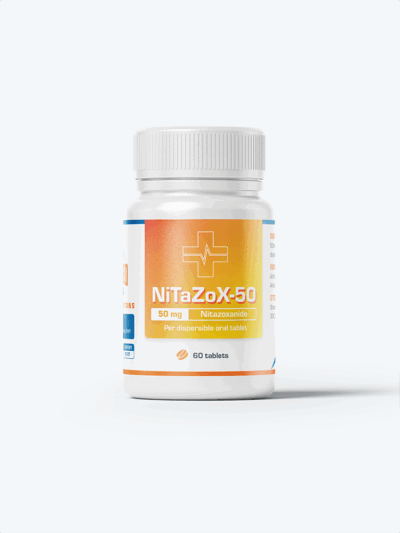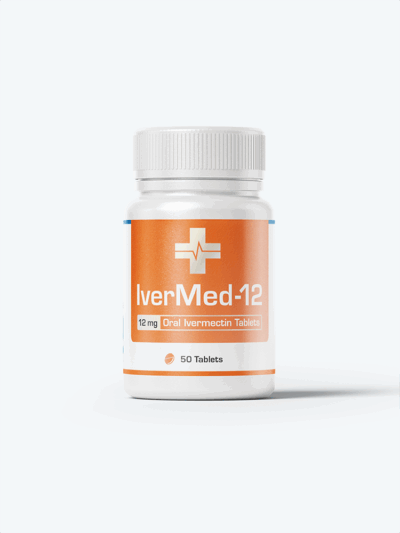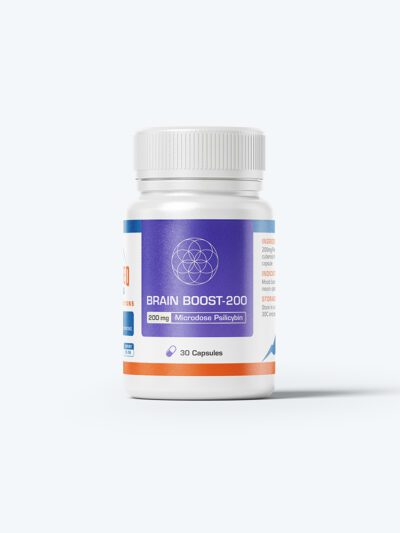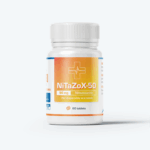
NiTaZoX-50
NiTaZoX-50
Anti-Cancer, Anti-Parasitic, HealingOriginal price was: $111.00.$99.00Current price is: $99.00.
60 Nitazoxanide Tablets Composition –
50mg Nitazoxanide per dispersible oral tablet
Indications – Anti-parasitic, Anti-Viral, Anti-cancer, Anti-bacterial
Dosage – Use as directed
Elevated Healing presents a very interesting compound for sale known as Nitazoxanide. NiTaZoX-50, Nitazoxanide, is an orally active drug with significant patient experience including more than 75 million adults and children.
NiTaZoX-50 is a broad-spectrum anti-infective drug that adversely affects viability, growth, and proliferation of a range of extracellular and intracellular protozoan, helminths, anaerobic and microaerophilic bacteria, and viruses. Nitazoxanide, is an FDA approved antiparasitic drug primarily used for treating protozoal infections like giardiasis and cryptosporidiosis, and it has emerged as a promising repurposed agent for cancer therapy based on extensive preclinical research. Pioneered by Dr Simon Yu as early as 2003, Nitazoxanide shows great promise as an anti-cancer agent.
PLEASE NOTE: the administration of NiTaZoX-50 with a high-fat meal greatly increases its bioavailability. Consume your dose 5-10 mins prior to a meal.
-
Description


